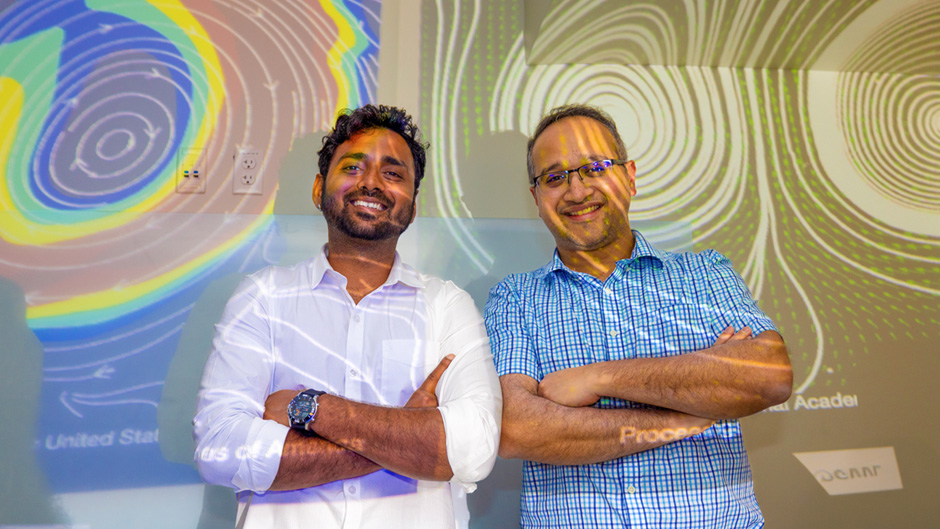UNC McAllister Heart Institute scientists led by Li Qian, PhD, developed a single-cell genomics pipeline to discover the molecular roadmap underlying the conversion of human scar-making fibroblasts into cardiomyocytes.

CHAPEL HILL, N.C. – Every year 790,000 Americans suffer a heart attack, which leaves damaged scar tissue on the heart and limits its ability to beat efficiently. But what if scientists could reprogram scar tissue cells called fibroblasts into healthy heart muscle cells called cardiomyocytes? Researchers have made great strides on this front with lab experiments and research in mice, but human cardiac reprogramming has remained a great challenge.
Now, for the first time, researchers at the McAllister Heart Institute (MHI) at the University of North Carolina at Chapel Hill have developed a stable, reproducible, minimalistic platform to reprogram human fibroblast cells into cardiomyocytes. And by taking advantage of the latest single-cell technologies and mathematical simulation, the researchers have produced a high-resolution molecular roadmap to guide precise and efficient reprogramming.
This work, published in the journal Cell Stem Cell today, was led by senior author Li Qian, PhD, Associate Professor of Pathology and Laboratory Medicine and Associate Director of MHI, a pioneer in cardiac reprogramming over the past decade. Her lab’s latest work has pushed cardiac reprogramming in human patients one step closer to reality, with an eye toward helping millions of people recover from the debilitating effects of heart attacks.
“We’re confident our interdisciplinary approach of combining biological experiments with single-cell genomic analyses will inspire future crucial steps toward understanding the nature of human cardiomyocytes and translating this knowledge into regenerative therapies,” Qian said.
Qian and her team introduced a cocktail of three genes – Mef2c, Gata4, and Tbx5 – to human cardiac fibroblast cells with a specific optimized dose. To increase efficiency, they performed a screen of supplementary factors and identified MIR-133, a small RNA molecule that when added to the three-gene cocktail – and with further in-culture modifications – reprogrammed human cardiac fibroblast cells into cardiomyocytes at an efficiency rate of 40 to 60 percent.
Next, the group sought to answer how the process of converting cells into cardiomyocytes actually works. To answer this, they looked at the molecular changes of individual cells throughout the process of reprogramming. Their analysis identified a critical point during the reprogramming process when a cell has to “decide” between progressing into a cardiomyocyte or regressing to their previous fibroblast cell fate. Once that process begins, a suite of signaling molecules and proteins launch the cells onto different molecular routes that dictate their cell type development.
The researchers also created a unique cell fate index to quantitatively assess the progress of reprogramming. Using this index, they determined that human cardiac reprogramming progresses at a much slower pace than that of the previously well-described mouse reprogramming, revealing key differences across species and reprogramming conditions.
“You can think of this cell reprogramming process like map routes on Google,” Qian said. “The starting scar-forming fibroblasts are like cars looking for the right GPS instructions to get them home – to a cardiomyocyte fate. Our work identified roadblocks, wrong exit ramps, and gas stations – the genetic facilitators – to get the fibroblasts to the destination we want. Our newly developed cell fate index is like a gauge on the dashboard, predicting how far home is.”
This work illuminates previously unidentified characteristics of human cardiac reprogramming and provides new research tools to better understand the processes of cell fate transition and reprogramming within humans.
“Our single-cell pipelines and new algorithms can certainly be used for studying other biological processes, including differentiation, de-differentiation, or drug response of a cell.” Qian added. “This research approach is not limited to the heart, but heart disease remains the number one killer in the world and the main focus of our lab.”
In addition to Qian, other authors on this paper are Yang Zhou, PhD (currently at University of Alabama at Birmingham, Birmingham); Ziqing Liu, PhD, at the UNC McAllister Heart Institute; Joshua Welch, PhD (currently at University of Michigan); Li Wang, PhD, Tiffany Garbutt, PhD, Benjamin Keepers, Hong Ma, MD, PhD, Jan Prins, PhD, and Jiandong Liu, PhD, all from University of North Carolina, Chapel Hill; and Xu Gao, PhD, and Weining Shen, PhD, both from the University of California-Irvine.
The work is supported by the National Institutes of Health (National Heart, Lung, and Blood Institute), the American Heart Association, and generous gifts from Dr. Hugh “Chip” McAllister and Cecil Sewell.
https://www.newswise.com/articles/scientists-make-single-cell-map-to-reprogram-scar-tissue-into-healthy-heart-cells

